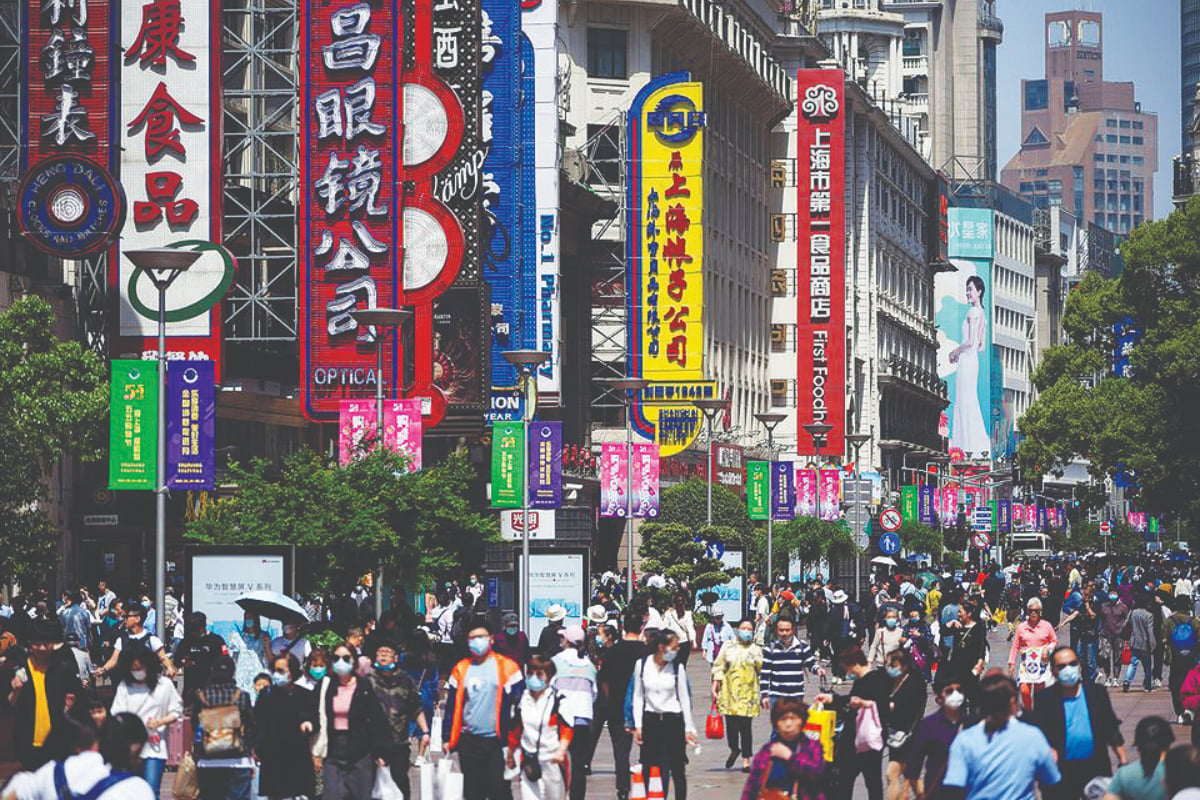China’s CPI rises 2.5% in August; growth slows down
-
18th Sep, 2022. 09:18 am

China’s CPI rises 2.5% in August; growth slows down
China’s CPI growth slowed down in August amid a combination of factors such as the decline in crude oil prices, data from the National Bureau of Statistics (NBS) showed.
Experts said that while China does face certain upward inflationary pressure in the second half of this year, there are still favorable conditions for prices to remain generally stable. And the relatively stable CPI, which is in stark contrast to the high inflation in major economies around the world, has enabled China to maintain a different monetary policy stance even as other major central banks, including the Federal Reserve, continue to raise interest rates.
China’s consumer price index (CPI), a main gauge of inflation, rose 2.5 per cent year-on-year in August, slowing from a 2.7 per cent rise from the previous month and lower than general market expectation, according to the NBS data. On a month-on-month basis, the CPI fell 0.1 per cent. The increase on a year-on-year basis was mainly due to\ steep food price rises, including pork, fruits, and vegetables, based on the low base of the previous year. Food prices rose 6.1 per cent year-on-year in August, contributing about 1.09 percentage points to the CPI increase, while non-food prices gained 1.7 per cent, contributing about 1.38 percentage points to the CPI increase, according to Dong Lijuan, a statistician at the NBS.
In August, pork price jumped 22.4 per cent year-on-year, expanding 2.2 percentage points from July. Prices of fruits and vegetables rose by 16.3 per cent and 6 per cent year-on-year, respectively, NBS data showed.
However, the core CPI, which excludes food and energy prices, gained only 0.8 per cent in August, unchanged from the July level, indicating a general stability in prices for consumer goods and services.
Judging from the current inflation data, the domestic market supply is relatively adequate and the imported inflationary pressure is expected to weaken, meaning that China will be able to attain its annual CPI growth target of 3 per cent, which will provide ample room for flexible macroeconomic policy adjustment, experts noted.
“Previous market forecast for August CPI was around 2.8 per cent due to concerns over the impact of factors such as epidemic situation and extreme weather of heat wave on market supply. But the actual figure turned out to be lower than expected, in part reflecting the effectiveness of government measures aimed at ensuring the supply of important livelihood-related products,” Xi Junyang, a professor at Shanghai University of Finance and Economics, told the Global Times. “On the other hand, it is also because external pressures are abating.”
Concerns about the global economic slowdown and expectations of falling fuel demand led to sharp oil price falls, with the Brent crude down more than 11 per cent in August alone.
“Due to the seasonal increases in pork prices and others as well as the low base effect of the same period last year, domestic food prices may remain at a relatively high level in the coming months, but non-food prices, especially the core CPI, will maintain at a low level, so there is little chance that CPI will exceed the 3 per cent target in the fourth quarter,” a chief economist at a securities company, who requested anonymity, told the Global Times.
However, it should be noted that the mild rise in CPI also points to a structural problem in demand. Except for food, energy and other daily necessities, consumer demand is relatively weak, which remains the main challenge facing the macro-economy, the economist noted, adding that more stimulus and supportive policies are needed.
“In my view, there is still room for monetary policy adjustment. There were concerns that a high producer price index (PPI) growth would prop up CPI later on, but now such concerns have eased,” he said.
China’s PPI, a main gauge of factory prices, decelerated to grow 2.3 per cent year-on-year in August, a considerable drop from 4.2 per cent in July and market forecast of a 3.2 per cent growth, according to the NBS. On a month-on-month basis, the PPI fell 0.1 per cent.
A further fall in PPI growth means the declining cost of production for manufacturers, which will be conducive to reducing long-term inflationary pressure. China’s PPI once surged to a record high of 13.5 per cent in October 2021, spurring concerns over high inflation in consumer goods.
China’s stable inflation, which is in sharp contrast to the high inflation in the US and Europe, is mainly because China has been adhering to a prudent monetary policy based on its own economic conditions, professor Xi pointed out.
Catch all the Business News, Breaking News Event and Latest News Updates on The BOL News
Download The BOL News App to get the Daily News Update & Live News.